I'm trying to find the max rank node and the depth. Here is my code.
import pygraphviz as pgv
class Test:
def __init__(self):
self.G = pgv.AGraph(directed=True)
self.G.add_node('a')
self.G.add_node('b')
self.G.add_node('c')
self.G.add_node('d')
self.G.add_node('e')
self.G.add_node('f')
self.G.add_edge('a', 'b')
self.G.add_edge('b', 'c')
self.G.add_edge('b', 'd')
self.G.add_edge('d', 'e')
self.G.add_edge('e', 'f')
print(self.G.string())
self.find_max_rank_node()
def find_max_rank_node(self):
nodes = self.G.nodes()
depth = 0
for n in nodes:
layer1 = self.G.successors(n)
if layer1:
depth = depth + 1
for layer_one in layer1:
layer2 = self.G.successors(layer_one)
print(n, layer2)
if __name__ == '__main__': Test()
The output should be f and 4. I started to code it but realized that I'm not going to know how depth the branch is ... and I'm not sure how to write the loop.
